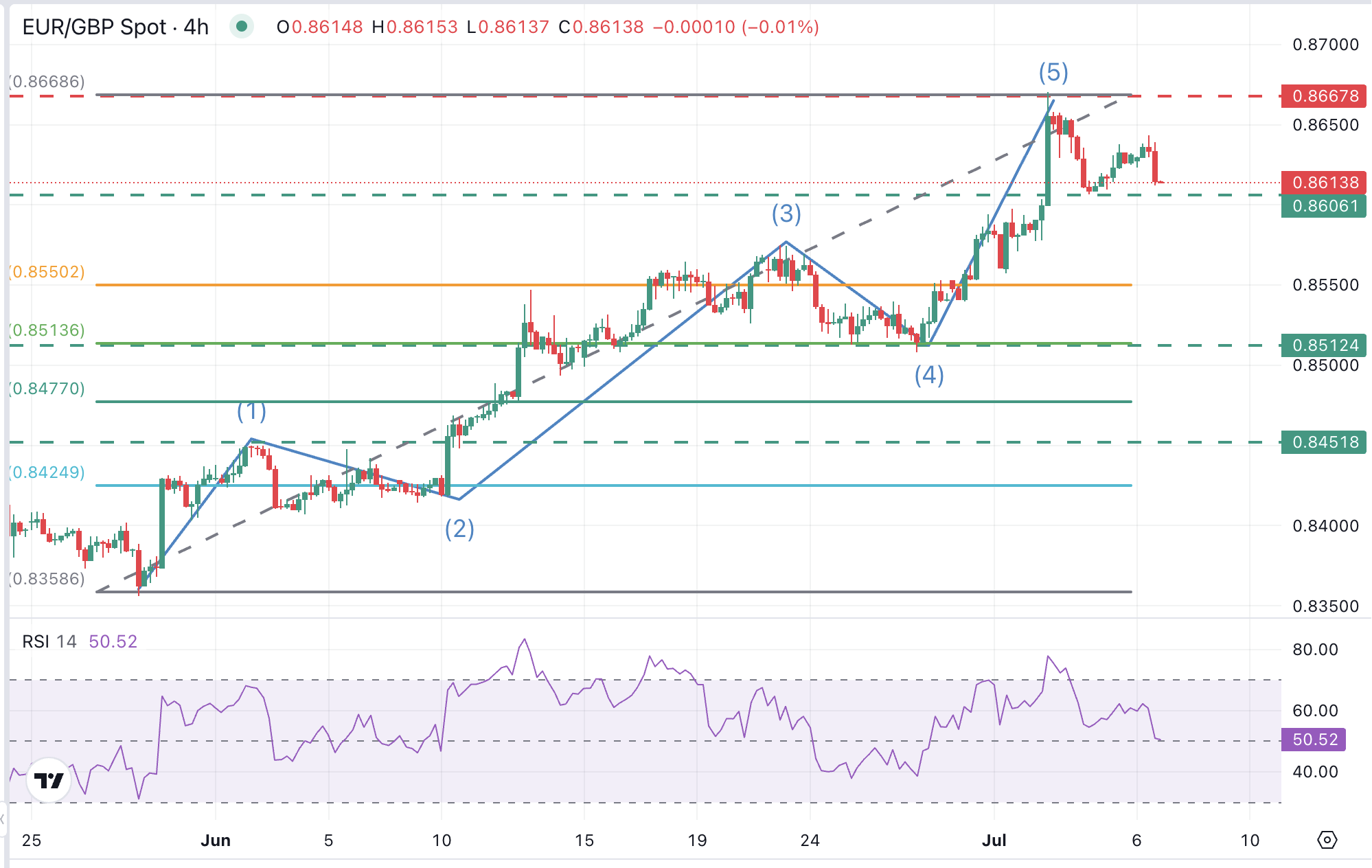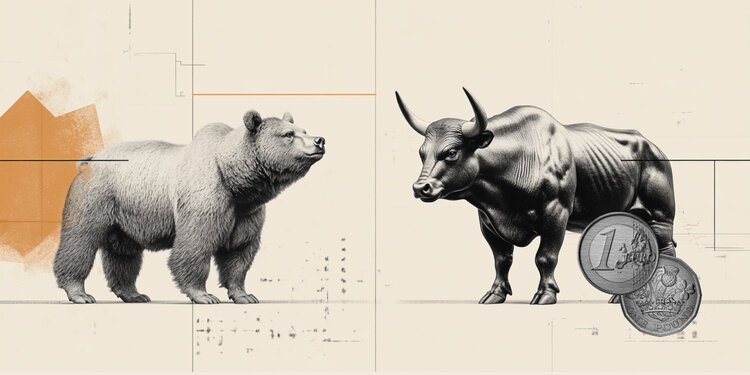- Tariff fears are hitting the Euro worse than the Pound.
- The GBP has been firmer since UK Chancellor Reeves was confirmed in her role.
- EUR/GBP is hovering right above a significant support area at 0.8600.
The Pound is faring better than the Euro in a risk-averse market, as investors await more clarity about the size of the US tariffs and the date of their introduction. The Euro is trading lower, approaching a significant support area at 0.8600.
A strong German Industrial Production report, showing an unexpected growth in factory output, failed to cheer investors earlier on Monday, and the common currency extended losses after a widely expected contraction in the Eurozone’s retail consumption.
The Pound, on the other hand, has gained some strength since the UK chancellor Rachel Reeves was confirmed in the role, although market concerns about the UK fiscal deficit remain looming, and are likely to weigh on a significant Pound recovery.
Technical Analysis: EUR/GBP is showing signs of topping

The Euro was capped at 0.8665 last week, and today’s lower high at 0.8645 suggests that the bullish cycle might be coming to an end. The pair, however, should break below the July 3 and 4 low, at the 0.8600 area, to confirm the correction.
Further depreciation below the mentioned level would push the 4-Hour RSI below the 50 level, highlighting the completion of a 5-Wave (Elliott Wave) bullish cycle.
The next support level is the 38.2% Fibonacci retracement of June’s rally, at 0.8550, ahead of the June 25 and 27 lows, at 0.8515, which is coincident with the 0.5= Fibonacci retracement of the mentioned cycle.
On the upside, a bullish reaction above the July 2 high, at 0.8670 cancels this view and shifts the focus to the year-to-date high, at 0.8740.
Euro FAQs
The Euro is the currency for the 19 European Union countries that belong to the Eurozone. It is the second most heavily traded currency in the world behind the US Dollar. In 2022, it accounted for 31% of all foreign exchange transactions, with an average daily turnover of over $2.2 trillion a day.
EUR/USD is the most heavily traded currency pair in the world, accounting for an estimated 30% off all transactions, followed by EUR/JPY (4%), EUR/GBP (3%) and EUR/AUD (2%).
The European Central Bank (ECB) in Frankfurt, Germany, is the reserve bank for the Eurozone. The ECB sets interest rates and manages monetary policy.
The ECB’s primary mandate is to maintain price stability, which means either controlling inflation or stimulating growth. Its primary tool is the raising or lowering of interest rates. Relatively high interest rates – or the expectation of higher rates – will usually benefit the Euro and vice versa.
The ECB Governing Council makes monetary policy decisions at meetings held eight times a year. Decisions are made by heads of the Eurozone national banks and six permanent members, including the President of the ECB, Christine Lagarde.
Eurozone inflation data, measured by the Harmonized Index of Consumer Prices (HICP), is an important econometric for the Euro. If inflation rises more than expected, especially if above the ECB’s 2% target, it obliges the ECB to raise interest rates to bring it back under control.
Relatively high interest rates compared to its counterparts will usually benefit the Euro, as it makes the region more attractive as a place for global investors to park their money.
Data releases gauge the health of the economy and can impact on the Euro. Indicators such as GDP, Manufacturing and Services PMIs, employment, and consumer sentiment surveys can all influence the direction of the single currency.
A strong economy is good for the Euro. Not only does it attract more foreign investment but it may encourage the ECB to put up interest rates, which will directly strengthen the Euro. Otherwise, if economic data is weak, the Euro is likely to fall.
Economic data for the four largest economies in the euro area (Germany, France, Italy and Spain) are especially significant, as they account for 75% of the Eurozone’s economy.
Another significant data release for the Euro is the Trade Balance. This indicator measures the difference between what a country earns from its exports and what it spends on imports over a given period.
If a country produces highly sought after exports then its currency will gain in value purely from the extra demand created from foreign buyers seeking to purchase these goods. Therefore, a positive net Trade Balance strengthens a currency and vice versa for a negative balance.

